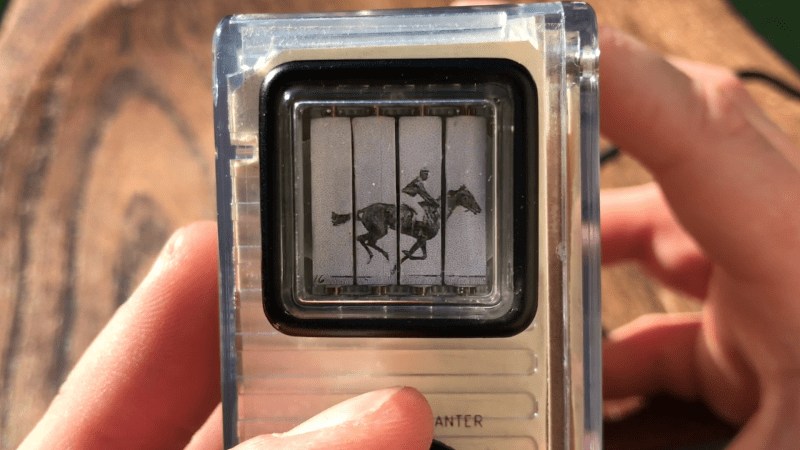It doesn’t matter how you pronounce it, because whichever way you choose to say “GIF” is guaranteed to cheese off about half the people listening. Such is the state of our polarized world, we suppose, but there’s one thing we all can agree on — that a mechanical GIF is a pretty cool thing.
What’s even better about this thing is that [Mitch], aka [Hack Modular], put some very interesting old aircraft hardware to use to make it. He came upon a set of cockpit indicators from a Cold War-era RAF airplane — sorry, “aeroplane” — that used a magnetically driven rack and pinion to swivel a set of prism-shaped pieces to one of three positions. Which of the three symbols displayed depended on which faces were turned toward the pilot; they were highly visible displays that were also satisfyingly clicky.
After a teardown in which [Mitch] briefly discusses the mechanism behind these displays, he set about customizing the graphics. Rather than the boring RAF defaults, he chose three frames from the famous Horse in Motion proto-motion picture by [Eadweard Muybridge]. After attaching vertical strips from each frame to the three sides of each prism, [Mitch] came up with a driver for the display; he could have used a 555, but more fittingly chose series-connected relays to do the job. Capacitors slow down the switching cascade and the frame rate; a rotary switch selects different caps to make the horse appear to be walking, trotting, cantering, or galloping — yes, we know they’re each physically distinct motions, but work with us here.
The whole thing looks — and sounds — great mounted in a nice plastic enclosure. The video below shows it in action, and we find it pretty amazing the amount of information that can be conveyed with just three frames. And we’re surprised we’ve never seen these displays before; they seem like something [Fran Blanche] or [Curious Marc] would love.
















That’s fun!
I do not like pushing those displays to several tens of Hz at all.
That’s still harmless, I think. Really harmful are those circuits in which the relay cuts its own power source. That will make the relay click a few dozen times a second, unless capacitors are buffering the power loss/delaying the process. It’s like a crude oscillator, essentially. In worst case, sparks will wear out the metal pins even more.
Make it a mechanical JPG and avoid the issue.
You mean “MJPEG” ?
Next logical step would be to 3D print your own unit (hopefully larger) that utilizes the same rack/pinion mechanism that’s modified to support larger pieces that have more than 3 sides, thereby enabling more frames that can be displayed. I’m sure kerning becomes more of an issue with the more sides you add, but bezels and a bit of cleverness can probably take it a bit further. Neat tech nonetheless! Reminds me of flip-disc/flipdot as well as flip clocks.
More than 3 sides is not useful: With 4 sides you need a sqrt(2)-1 unit gap between faces of 1 unit wide to make them roll around, with more than 4 faces you always see another face, even when looking head-on.
Will nobody comment on the Trollscience reference?
There were a lot of those videos from more than one creator, you’re going to have to be more specific.
Don’t they have billboards that use this technique?
Magnets have no power. Magnetic fields do no work.
Full of potential though. That literally defines what a magnet it. Plus as a failed modern physics, we describe electric/magnetic fields as antonyms.
Sadly most, even more sad really is ALL, of you are mindless parroting ree-ree’s(🤪) with nothing to say and wouldn’t know a thing about field theory that could possibly provide a clue into nature’s simple ways of doing things SIMPLY.
Back in the late 1980s, I had a counter from an old dictaphone machine that advanced the numbers by firing a coil. My brother built the circuit that made it advance at different speeds by changing the capacitor used. All thanks to the Radio Shack 160-in-1 kit which taught him how to do it.
The galloping horse is a classic.
I think there even was such a graphics demo for Windows 2.x from the ’80s.
It’s an animation, not a GIF.
If you pronounce it Jif, you confuse listeners with peanut butter.